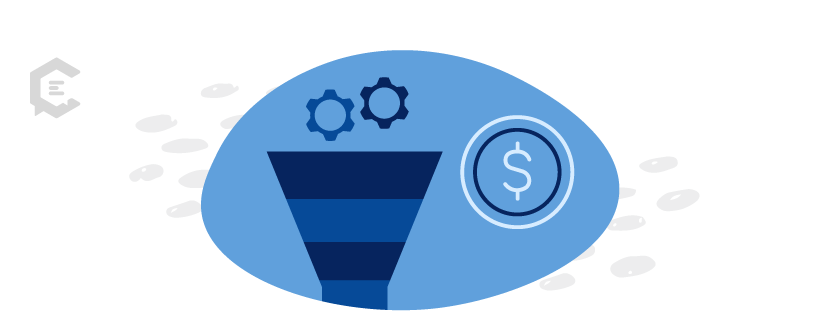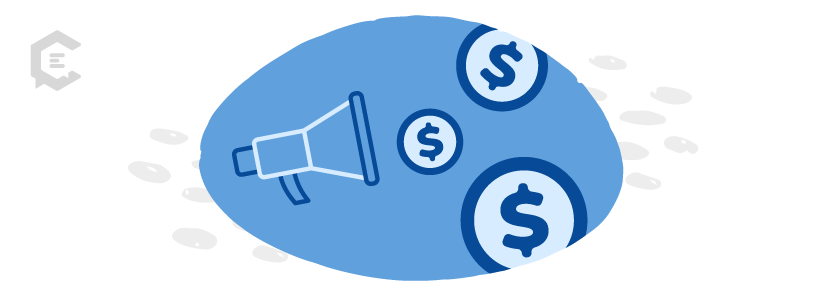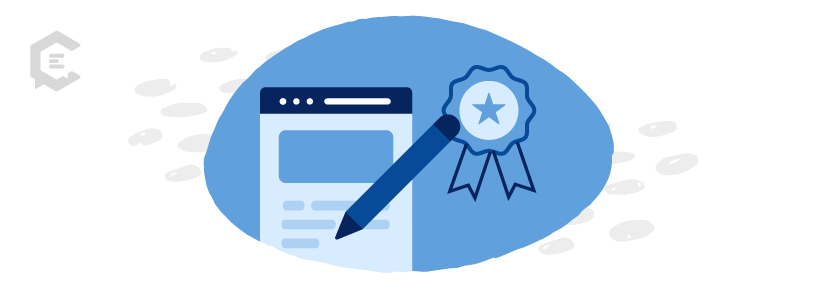Relationships, in business and our personal lives, follow a progression. At first, everyone is a stranger.
Then, you meet them and share information about yourselves. If you say the “right” things, these strangers grow to like and trust you. You say and do things that make you more appealing. And, if everything works out, you become fast friends. You meet their needs and vice versa.
The “customer journey” is a term that marketers often use to lead total strangers along the path to selling them a product or service.
A professional or consumer has a business need or problem. Or, they may not even yet know that they have a challenge. Your company has an opportunity to attract, engage, and delight them with customer journey content for each stage.
What are the stages of the buyer’s journey?
Several models for marketing funnels exist, and knowing them is crucial for creating customer journey content tailored to each stage.
The traditional roadmap breaks the stages down into:
- TOFU (top-of-funnel): The phase when someone is learning and exploring the category or perhaps finding out for the first time that they have a problem
- MOFU (middle-of-funnel): This is when you can give people more in-depth information about their needs and your solution
- BOFU (bottom-of-funnel): You’ve built trust and engagement and begin the process of closing the sale
- RETENTION: An often-overlooked stage in the journey has recently drawn more attention. Once you’ve built a relationship with a new customer, you need to prove that they made the right choice continually.
This all makes the steps of building a relationship straightforward and linear. Recently, more marketers have started talking about the engagement process as a flywheel rather than a funnel. The prospect sits in the middle, and the goal of the business is to attract, engage, and delight them.
But no matter what terminology and graphics you use to build your marketing and content plans, some basic principles hold about using storytelling and compelling content to develop and maintain a solid relationship with your target audience — leading to sales and growth.
Full-funnel content marketing is critical
What does that mean? In detail, you must map out how you plan to use customer journey content throughout the decision-making process. As in any relationship, your tone and information must evolve as you build trust and interaction, turning strangers into raving fans.
For this article, we’ll use four primary funnel segments (through the eyes of the target market) and match content types to each.
Content plans require a tight content strategy and the right resources to produce the various types of media you might need. Think too about the different levels of decision-making within a company. Some customer journey content may be geared to C-level executives, while other pieces are for the professionals handling day-to-day operations.
You want to be sure that everyone in an organization knows who your company is, trusts you, and includes you in evaluating products/services.
1. Awareness
Consumers and business decision-makers can be overwhelmed by messages in a world where content increases by the second.
Among the content types you can use to turn that stranger into an interested prospect are:
- Social media
- Blogs
- Infographics
- Ebooks
- Podcasts
- Newsletters
- White papers
- Ads
- Public relations efforts
- Research
In short, any media that stands out in a sea of messaging will grab the reader’s or viewer’s attention. Frequency, consistency, and timeliness are critical at this stage. The more often you see messaging from a brand, the more likely you will pay attention to it.
Remember that people may not know or care about your product or even be aware that the category exists at this stage. For example, ClearVoice provides quality content to a wide range of businesses.
Marketing decision-makers may be using individual freelancers and in-house staff and don’t even know that they could save time or money by outsourcing content creation.
But rather than approaching prospects with a hard sell on our system, ClearVoice shares useful marketing information as part of the TOFU (awareness-building) stage.
For example, many people today are using QR codes in their marketing. By publishing an educational article about their value, we are not only solving a customer need, but we are establishing ourselves as a company that is on top of marketing trends.
The ideal customer takeaway should be, “Wow! This company knows its stuff. Let me learn more about what they do.”
Your TOFU strategy and customer journey content should be driven by what topics most interest your target market and what media they consume.
2. Evaluation
Let’s follow the example we gave above. ClearVoice already planted its brand in the prospect’s mind. They know that ClearVoice has expertise in content marketing and is an excellent source of trends. And now, perhaps they are open to considering engaging an external team to help with content creation.
The types of customer journey content that work best at this mid-funnel or MOFU stage are:
- Educational pieces
- Quizzes
- Discounts and offers
- e-mails
- Resource guides
- Webinars and events
- White papers (especially content that is gated and can help you gather more information about prospects)
Your company is no longer a total stranger to your prospects, and now you’ve been granted permission to share information, experiences, and deals that will solve their business problems.
Remember to be “you-centric.” In other words, your content should revolve around information that benefits your user or buyer. A new staff announcement or a new round of funding, for example, should be presented in terms of how it will ultimately help your prospect.
But those prospects may be comparing your company to other solutions at this stage. So, your content needs to reinforce your knowledge and brand personality.
3. Conversion
“I’m ready to invest in a solution, and which one do I buy?” the prospect is thinking. Now is the time to truly dazzle the potential buyer. They know your brand and may even look forward to consuming your varied, insightful, and frequent (but not annoying) content.
You’ve built a certain level of trust. So, now your customer journey content can become more salesy. For example:
- Product or service demos
- Customer stories and testimonials
- Staff, award, and funding announcements (but see #2)
- Specification sheets
- Webinars and events designed around case studies
Now is your time to shine and show the prospect that you can provide a much-needed solution to a problem they may not have realized they already have.
Be wary of pushing too hard at this stage. After all the effort you’ve put into wooing a prospect, you don’t want them to be turned off by aggressive and overly-frequent sales tactics.
But, as we noted above, the decision-making process in the customer journey is not necessarily a straight line. So, by having a consistent and powerful content flow, you’ll remain top-of-mind whenever the prospect is ready to decide.
4. Delight/retention
One might argue that this is where the arduous work begins. You’ve closed the deal, and that prospect is now a customer. But, if they are still being courted by your competitors or don’t know how to best use your product or service, you may quickly lose them.
Your competitors may still be pursuing your customers, so building loyalty is essential.
Churn can be costly. What types of information and services do your existing customers need? Your customer journey content at this stage should be:
- Ongoing educational and trend information
- Exclusive invitations to events and opportunities
- Announcements of product enhancements and company news
- Customer satisfaction surveys (and publishing of results)
Your content should all be geared toward making your customers think, “I made the right choice. This company values my business! I can’t imagine working with anyone else.”
How do you know that your content is working?
A whopping 65% of companies don’t have a system for evaluating the success of their content. Establishing metrics is critical.
One of the challenges in tracking the success of a digital marketing funnel is that you may not be able to pinpoint precisely which content element drove a prospect to finally commit to a purchase (known as attribution).
Although setting up unique tracking codes and time-mapping sales may give you insights, content marketing measurement is still not an exact science.
Be sure to schedule regular content reviews with your marketing and sales teams and learn from your successful programs and your failures. But remember to be patient.
Especially in complex sales or areas with lots of competition, the marketing and sales process takes time. You can’t expect to load TOFU content into your funnel today and have thousands of new customers tomorrow.
Above all, having the right team of professionals helping you craft your customer journey content for each stage of the funnel (or flywheel) can make a massive difference in results.
Even if you have content marketing experts in-house, augmenting your team with creators who are specialists in your industry or type of content can result in significant performance improvements and can bring you best practices from other businesses.
Outsourcing can also help you better manage a heavy volume of content creation at each funnel stage.
If you need help creating customer journey content tailored to each stage of the journey and your target audience, talk to a content specialist at ClearVoice today. Our expert strategists, writers, editors, and SEO professionals can create informative, compelling, and authority-building blog posts, articles, white papers, ebooks, email copy, social media content, and much more.






